We started the week with Ukrainian interior designers before moving to their products and, at first, it seemed right to finish the week with the traditional househunter from the historic city of Kyiv. I looked through dozens of places before settling on this one – modern, soviet-built, town, coast and country. But then it didn’t feel right to talk about a house when so many homes now lie in ruins. So I kept the kitchen – which is decorated in the colours of the Ukrainian flag and we will look at a property closer to home. Our thoughts are with everyone in this country.
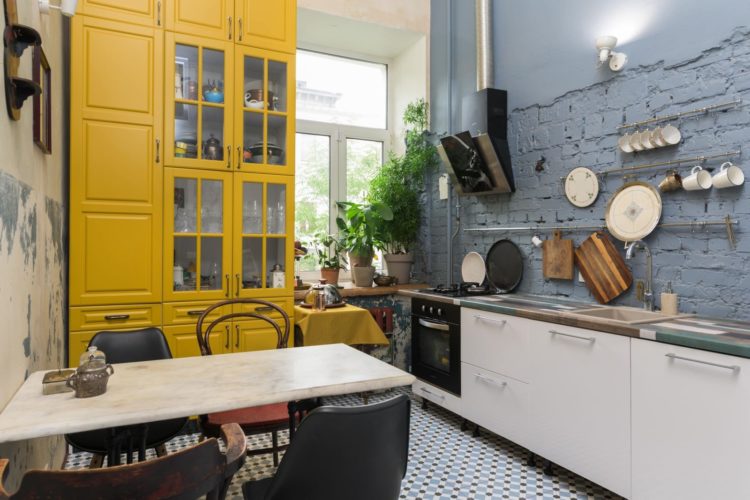
We will look, instead, at this lovely two bedroom apartment converted from an old pub in north London: “Listed as The Lion public house in 1855, the former inn was one of four taverns – The Lion, The Lamb, The Black Bull and The White Horse – known as the ‘Pepper Pots’, which provided popular pitstops for visitors to the Metropolitan Cattle Market. The pub ceased trading in 1963, and the building underwent a sympathetic restoration project in the early 2000s.”
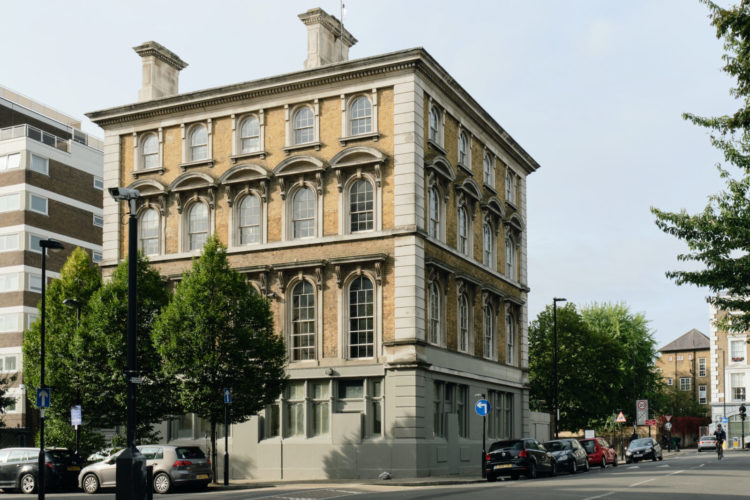
It’s on with Inigo for £850,000 and its colour palette of green, cream, wood and brass accents feels very soothing. And clearly those windows are a gift when it comes to character but if you’re feeling a touch of the green-eyed monster think of the bill for making the curtains!
So into this large, and elegant, reception room which is around 6m x 5m (19ft x 17ft). And for anyone who has wondered whether it’s worth the extra money on floor length curtains here’s the answer. They draw the eye up and back down and emphasise the height of the ceiling. This works even if you have lower ceilings as you are then creating a long line up the wall. To return to our trusty fashion analogies – a cropped trouser with an ankle strap shoe will make your legs look shorter than a full length flare that skims the floor.
If you have radiators under windows and worry that closing the curtains will cut off the heat, then consider blinds – you can always add curtains as a dress/decorative feature. Roman blinds, which can be made in a luxurious patterned velvet could be hung almost up to the ceiling in this room so they wouldn’t block that arch window. You can choose either the straight Roman variety to contrast with the rounded arch or the “relaxed” version (also known as London) which hangs down in a soft curve. I would suggest that works better on traditional rectangle windows as it would be too much here.
For long curtains, it’s fashionable to have a “puddle” of fabric but you need to think about who you are and how you live. Those puddles look great when properly arranged but if you are opening and closing these curtains twice a day you will need to spend time tweaking them or they will just look a mess and they get in the way of the furniture. On a wooden floor (so it slides) you can choose a broken length – imagine a suit trouser creasing over a shoe – which is more likely to fall into place as it sweeps across the floor, or you can skim – about 1cm (less if you can) above the floor so you can open and close without giving it a second thought.
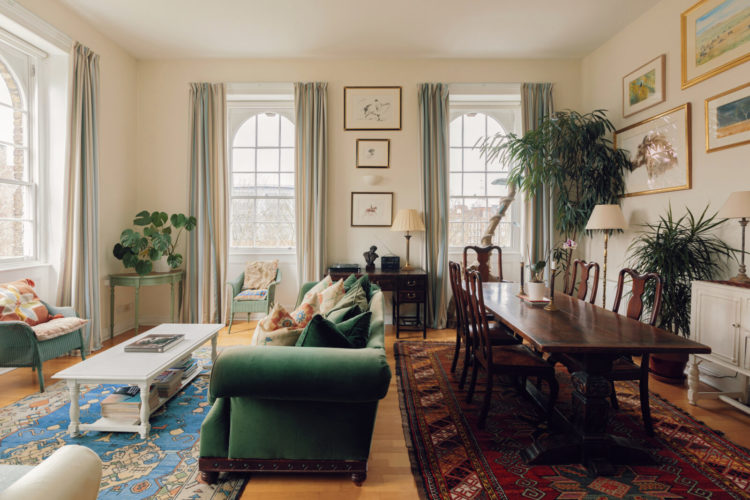
Right curtains done. Now the zoning. This is a big room and as tempting as it is to show that off by putting the furniture round the edges, it’s much more practical, not to mention relaxing, to give the impression that it is actually two rooms. The rugs act as flat walls if you will and create two distinct areas for furniture. If you have space then arranging the sofa with its back to part of the room will always help you create areas – even if it’s just a corner to read a book and be alone in rather than as part of the main sitting room.
If you live in a small apartment (and I appreciate this is a big room) or an open plan space, it’s good psychologically to be able to turn you back on parts of it. So if the kitchen is in the room it’s nice to be able to turn away from the washing up. If this dining table was used for work during the day, for example, then not having to look at it during the evening is good for your brain. I also think it’s actually more relaxing not to be constantly looking at the edges/boundaries of your space with your eye on the door and where the room ends. Turn around, focus on the thing you are doing in the part of the room you are doing it.
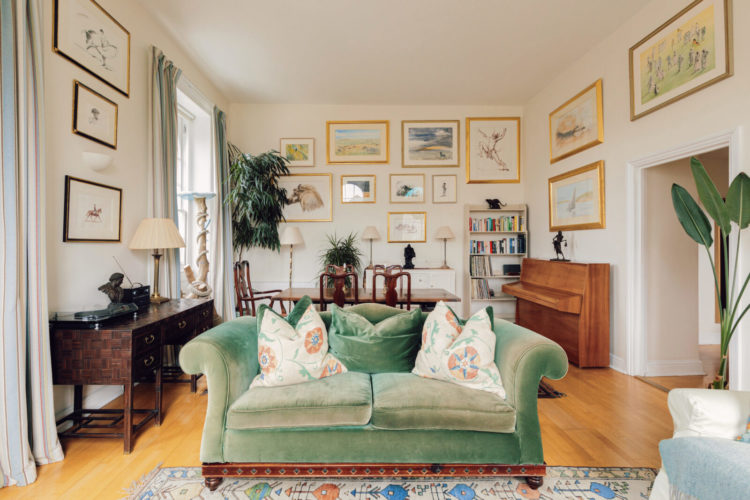
Now gallery walls. Sophie and I spoke about this yesterday on the podcast. The best ones are clearly organic and this one feels like it has been, and can continue to be, added to over time. Most of the frames are gold or black to bring it together although otherwise it just looks like pictures were hung in the closest available space. This works if you have a collection of pictures that you have built up over time. If you are buying specifically to fill a space you will need to plan it more as everything will look like it’s the same age – another reason for always having something vintage in every room.
The most common problem is that pictures are hung too high but if you are going to fill the entire wall then this clearly isn’t an issue. That said, if you are planning to do that over a period time try and start in the middle rather than at the top and working down.
I tend to feel that a gallery wall in a small room makes it look smaller and more cluttered and would tend to choose a single large picture to fill the space. Sophie, it will not surprise you to know, disagrees with me but we are both as one when it comes to staircases and landings as great places for collections of pictures as there is always something to look at as you travel past.
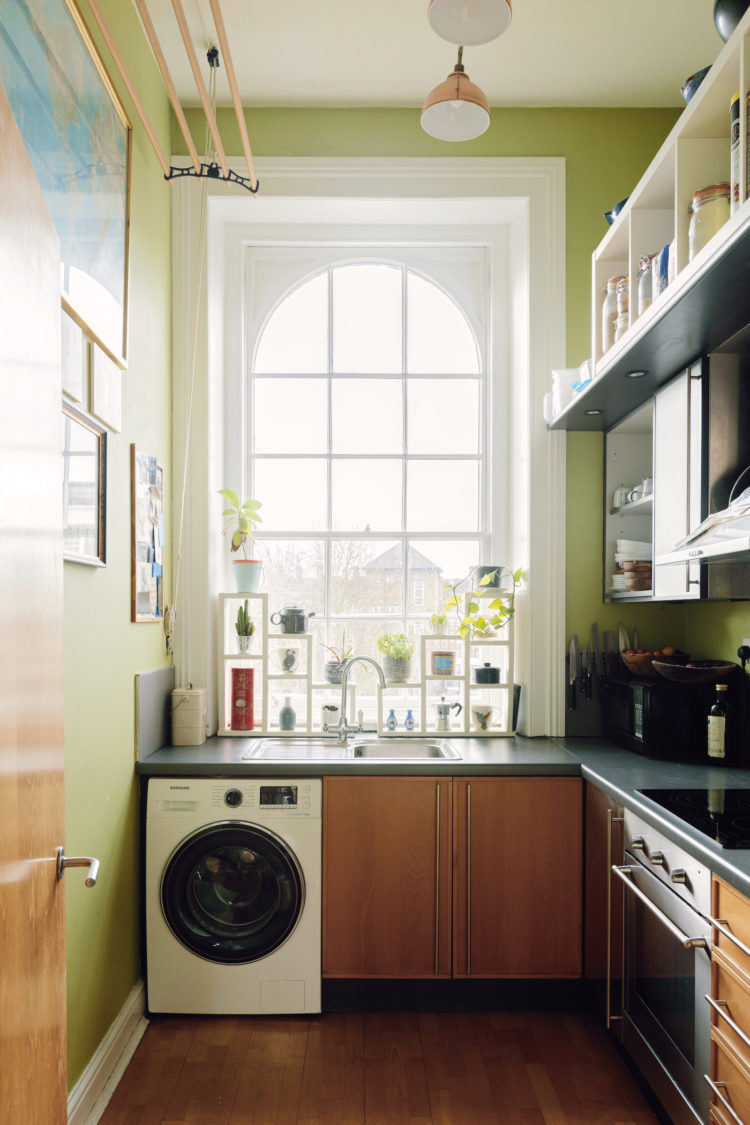
The kitchen, as you can see, is small. And that door, which opens into the room, is potentially taking up space that could be used for shelving or more storage. If you look on the floor plan you can see that there is room to fit a sliding door along the outside this room that would free up that space. Always my number one recommendation for smaller properties – can you gain space by swapping the hinges so the door opens in a different direction or by replacing a traditional door for a sliding one.
This could be either a more expensive pocket door, or a cheaper barn style. You can buy either rustic style runner and hang the same door or a more modern one that you could hide behind a wooden pelmet style. I think it’s always better to keep a kitchen door to a)hide the washing up and b) contain any cooking smells.
Finally, when it comes to small kitchens you want to keep them as simple and sleek as possible. If the budget doesn’t stretch to integrated appliances then take advantage of the current trend for curtains. This washing machine is right in front of the door and you would see it every time you walk past the room if the door was open. A bit of fabric hemmed top, bottom and sides and threaded onto a piece of net curtain wire and it’s gone. And if you choose a piece of fabric you love this view would give you joy on the way past.
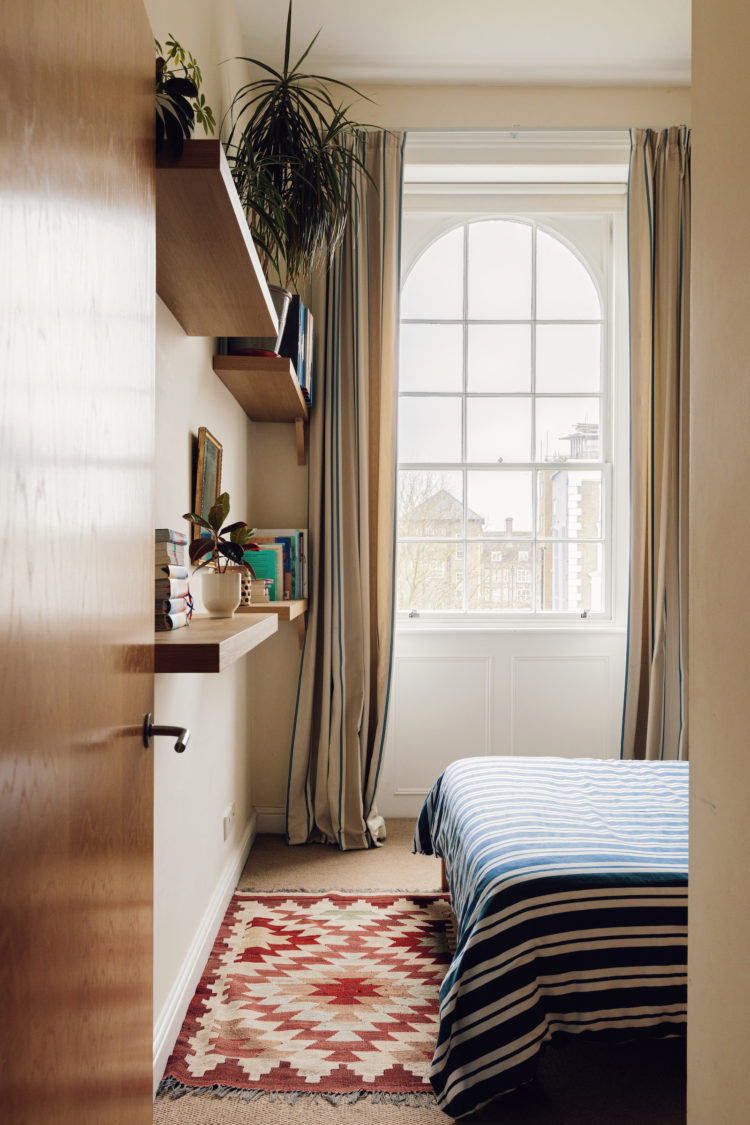
Peeking into the bedrooms on our way past and this curtain above is a “broken” style – see how it kinks at the bottom? As I said this might slide more easily over a wooden floor which is why, if you have carpet, a skimming length might be better.
The bedroom below is the one with access to the balcony but this curtain makes it feel cosier than it would with a glass door leading to the outside. This is London not Rome remember. And another example of an organic gallery wall clambering up and around the bed.
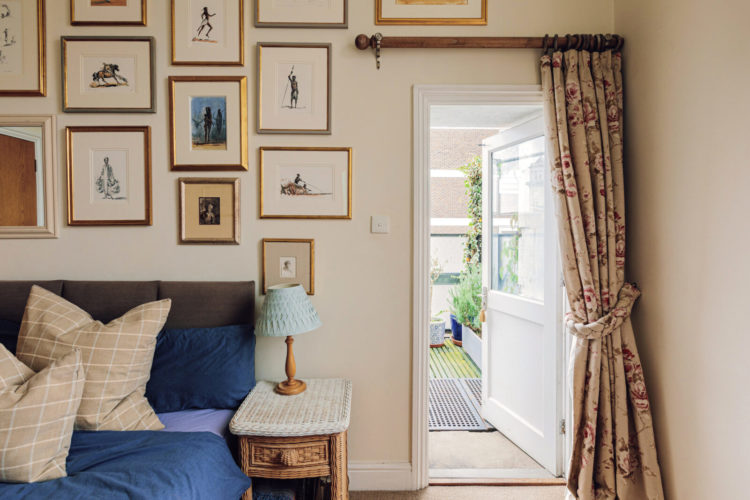
We’ll end with this view of the sitting room. The colour palette is very restricted but it feels, to me at least, very relaxing and calming. If you look closely you can see a hint of blue in the curtains which was picked up in the rug in the sitting area so there is a little more going on than you might have thought at first.
Note also the plants at different heights that take you eye around the room. Take this idea to lighting and you have an idea of how to light a room – in layers at different heights. Some extravagant, some more task-focused.
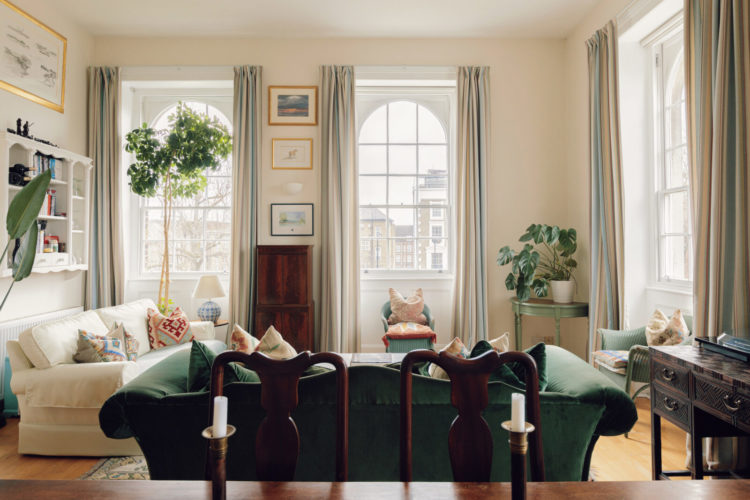
And with that I wish you all the best for the weekend. I note, from the stats, that I still have people dropping in from Ukraine. We see you, we stand with you. We hope for you.






I am in LOVE with that cat tree in the window! This has sent me down a rabbit hole on Etsy for an enjoyable hour…wondering if my cats would use it?
Beautifully written!
Beautiful arrangement of art, furniture and colour, but going on a million for those flat panel doors and that laminate worktop?
I LOVE the colour of the kitchen (both kitchens actually).
Thank you Kate for another inspiring email and for the lovely words you finished with in support of the people of Ukraine, it echos the sentiment that many of us in the UK feel. Your emails bring such cheer at a very grim time.
This is a lovely space.
I have never understood curtains that puddle. I always want to take them down and get out the sewing machine.
Cheers from Canada!